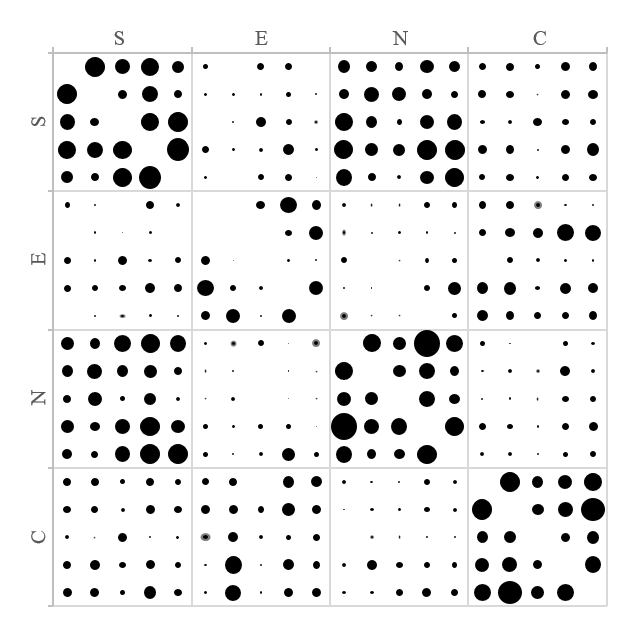I'm giving my sister a hand with a bunch of graphics for her thesis. She's dealing with 20 survey responses from a bunch of companies, and one of the natural things to do is look for correlation between answers.
Given that the survey was not the best ever (you gotta work with what you have, and she didn't make the survey), most correlations are strongly positive, and what little negative correlations are there are measly (strongest is -0.13).
Refresher: correlation measures how two measures are tied together. A positive correlations means that the higher a measure is, the higher the other measure is; for example, "uses Comic Sans" and "makes me want to stick a fork in my eyes" are positively correlated. Conversely, if the correlation is negative, the bigger a measure is, the smaller the other is. Correlation between 0.2 and -0.2 is considered negligible.
My idea for putting this data in the thesis is to arrange the correlations in a grid and show bubbles in place of numbers: the bigger the stronger. The problem is that I'm having a hard time deciding how the negative correlations should appear.
My first thought is that I'd have solid black circles for positive correlations and black-bordered white circles for negative correlations. However, the negative dots are so small, the black border takes over the circle filling and the net result is all dots appear to be black.
Since this is going to be printed, using any color outside of grayscale is... not a good idea. My current solution for now is to show a grey "halo" around negative dots (see the two dots at the very center), perhaps giving them undue attention. It's far from perfect and it highlights how all dots aren't even perfectly circular:
Another possibility is to make the negative dots grey altogether, but I don't know how those shades of gray are going to translate in print — and making test runs is probably too expensive of a BSc thesis.
What do?



